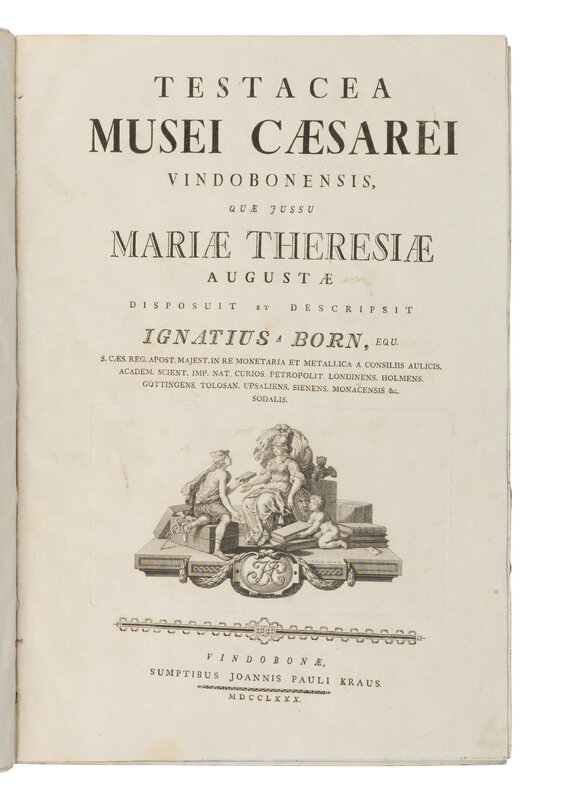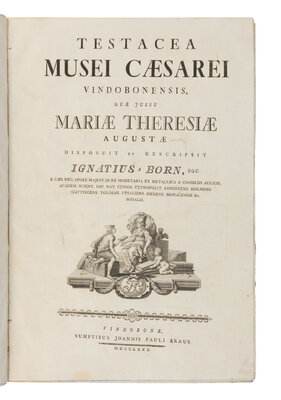Condition Report
Contact Information
Lot 182
Sale 6426 - Fine Printed Books & Manuscripts, Including Americana
Nov 13, 2025
10:00AM CT
Live / Chicago
Own a similar item?
Estimate
$4,000 -
5,000
Lot Description
[NATURAL HISTORY]. BORN, Ignaz Edler von (1742-1791). Testacea Musei Caesarei Vindobonensis, quae jussu Mariae Theresiae Augustae
disposuit et descripsit Ignatius a Born. Vienna: Gerold for Johann P. Kraus, 1780.
disposuit et descripsit Ignatius a Born. Vienna: Gerold for Johann P. Kraus, 1780.
Folio (406 x 279 mm). Half-title, title-page with emblematic engraved vignette by C. Schütz, 4 headpieces and 8 tailpieces, 36 in-text illustrations of shells, all engraved by Schütz, C. Conti and others, 18 plates (17 fine hand-coloured engraved plates of shells by Schütz or J. Adam after Fr. Fuxeder and 1 plate [Plate 4] supplied in expert watercolour facsimile). Modern quarter velum, contemporary marbled boards, original lettering-piece preserved on the spine, marbled edges (light rubbing to boards).
FIRST FOLIO EDITION of one of the most beautiful of all conchological works, including examples from the collection of the Empress of Austria, a collection "of great importance to systematists, as Born described from it a number of species new to science" (Dance).
The present work was commissioned by Empress Marie-Therese to record and codify her natural history collection in Vienna. In 1778, Born published a descriptive catalogue of the collection; the present work, issued two years later, is on a much more sumptuous scale and includes many fine color plates.
Baron Ignaz Edler von Born (1742–1791) was born in Karlsburg, Transylvania (now Alba Iulia, Romania). Having rejected a Jesuit education in Vienna, he studied law in Prague and only later turned to natural history—and, more importantly, to mining. He joined the Department of Mines and the Mint in Prague in 1770, and mineralogy is the field in which he is now best remembered (see DSB II, p. 315). His reputation and extensive experience led to his being called to Vienna by the Empress in 1776 to arrange and describe the Imperial collection. The work on the shells in the Royal Collection was the only published result of this commission, which was apparently cut short by the Empress’s death in 1780. An earlier edition, in octavo and with only a single plate, appeared in 1778. "Born's interests and activities extended into fields other than mineralogy and mining... In 1783 Born published Specimen monachologiae, a vicious satire against monks in which the various orders were classified according to a system modeled after Linnaeus (DSB)." BM(NH) I, p. 202; S. Peter Dance, Shell Collecting An Illustrated History, pp.93-94, no. 36; Nissen ZBI 470.
This lot is located in Chicago.





